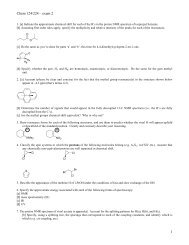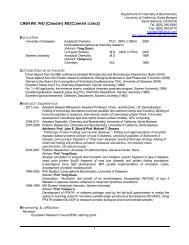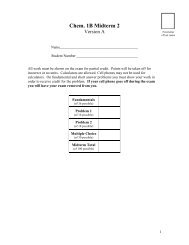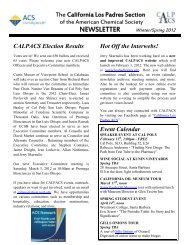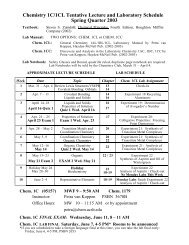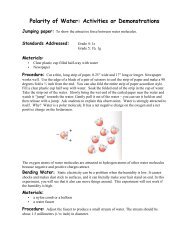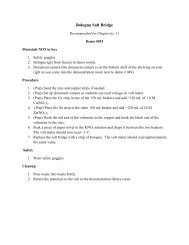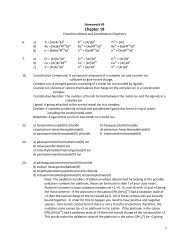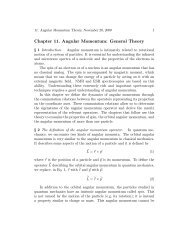Chapter 7. The Eigenvalue Problem
Chapter 7. The Eigenvalue Problem
Chapter 7. The Eigenvalue Problem
Create successful ePaper yourself
Turn your PDF publications into a flip-book with our unique Google optimized e-Paper software.
<strong>7.</strong> <strong>The</strong> <strong>Eigenvalue</strong> <strong>Problem</strong>, December 17, 2009 13<br />
I solved Eq. 65 for ψ 3 (1) and I got two solutions, 0.685 and −0.685. <strong>The</strong>y are<br />
equivalent, since they differ by a factor whose absolute value is 1; such “phase<br />
factors” make no difference in any calculation of an observable quantity. I<br />
use the positive root:<br />
ψ 3 (1) = 0.685 (66)<br />
and with this, I have<br />
ψ(1) = 0.685{−0.542, −0.914, 1} = {−0.371, −0.626, +0.685} (67)<br />
If you are the kind of person who worries about the mysteries of mathematics,<br />
you might wonder what happens if you use Eqs. 60 and 61, or perhaps<br />
Eqs. 59 and 61. I did this (see WorkBook7, Section 2, Cell 2) and no matter<br />
which pair of equations I pick, I get the same result for ψ 1 (1) and ψ 2 (1)! This<br />
must be so, if the theory is consistent, but it seems rather miraculous that<br />
it happens. However, no miracle is involved. Let us assume that we did not<br />
calculate the eigenvalue λ and left it undetermined in Eqs. 59—61. We can<br />
take Eqs. 59 and 60 and solve for the ratios ψ 1 (1)/ψ 3 (1) and ψ 2 (1)/ψ 3 (1).<br />
We obtain two solutions that depend on λ. Next we take Eqs. 59 and 61<br />
and solve for ψ 1 (1)/ψ 3 (1) and ψ 2 (1)/ψ 3 (1), obtaining two new solutions for<br />
those ratios. But the ratios obtained in the first calculation must be equal to<br />
the ratios obtained from the second calculation. This equality gives me an<br />
equation for λ. Icalculateλ from it and then I solve Eqs. 60 and 61, with this<br />
value of λ, forψ 1 (1)/ψ 3 (1) and ψ 2 (1)/ψ 3 (1). <strong>The</strong> result I get must be equal<br />
to the one obtained previously. This demand for consistency of the system<br />
of homogeneous equations, Eqs. 59—61, is fulfilled only for special values of<br />
λ. <strong>The</strong>se are the eigenvalues.<br />
Exercise 3 Implement the recipe outlined above for the homogeneous system<br />
(3.2 − λ)ψ 1 +2.4ψ 2 = 0 (68)<br />
2.4ψ 1 +(3.6 − λ)ψ 2 = 0 (69)<br />
Solve each equation for ψ 1 /ψ 2 and demand that the ratio (ψ 1 /ψ 2 ) obtained<br />
from Eq. 68 be equal to the ratio obtained from Eq. 69. This gives you an<br />
equation for λ; call it EQ. <strong>The</strong>n calculate the characteristic polynomial of<br />
the matrix and test whether it is the same as EQ. After that, go ahead and<br />
find the eigenvalues and the eigenvectors.




